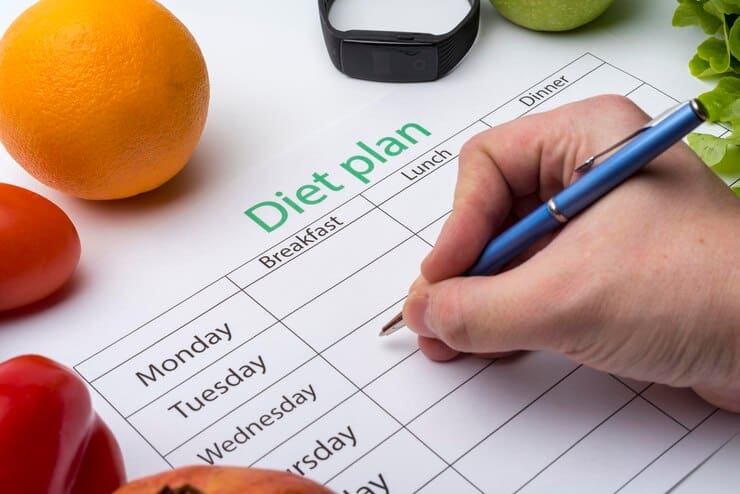Introduction
If you’re looking to lose 10 pounds in a month, intermittent fasting (IF) can be a game-changer! With intermittent fasting, you focus on when you eat rather than what you eat, making it a flexible option for weight loss. By scheduling eating and fasting windows, intermittent fasting can help create a calorie deficit, boost metabolism, and get you closer to your weight loss goals. Let’s dive into how intermittent fasting works and how it can help you reach your goal!
1. What is Intermittent Fasting?
Intermittent fasting is an eating pattern where you alternate between periods of eating and fasting. The most common method is the 16/8, where you fast for 16 hours and eat during an 8-hour window. IF doesn’t restrict specific foods but focuses on timing, making it a flexible choice that fits different lifestyles.
How It Works: By shortening your eating window, intermittent fasting naturally reduces calorie intake, which can help you lose 10 pounds in a month. During fasting periods, your body taps into stored fat for energy, promoting weight loss.
2. Benefits of Intermittent Fasting for Weight Loss
IF helps manage calorie intake, but it also offers additional benefits that support weight loss. Fasting can improve insulin sensitivity, boost metabolism, and help your body burn fat more efficiently, making it a great approach for those aiming to lose weight quickly.
Key Benefits: Increased fat-burning, reduced inflammation, and better appetite control. These benefits combined make IF an effective, sustainable method to lose 10 pounds in a month.
3. Choosing the Right Fasting Method
There are several types of intermittent fasting, and the best one depends on your lifestyle. Besides the 16/8 method, popular options include the 5:2 method (eating normally for five days and restricting calories on two non-consecutive days) and alternate-day fasting.
How to Do It: Start with the 16/8 method if you’re new to fasting. Gradually adjust to longer fasting windows if it feels comfortable. Finding the right method is essential to making intermittent fasting sustainable and helping you lose 10 pounds in a month.
4. How to Structure Your Meals During Eating Windows
During eating windows, focus on nutrient-dense foods that keep you full and energized. High-protein, high-fiber foods are especially important, as they help control hunger and support muscle maintenance as you lose weight.
How to Do It: Include protein sources like eggs, chicken, or tofu, fiber-rich veggies, and healthy fats like avocado. Avoid overeating during your eating window to maintain a calorie deficit for effective weight loss.
5. Stay Hydrated During Fasting Periods
Staying hydrated is crucial with intermittent fasting. Drinking water, herbal teas, or black coffee during fasting periods reduces hunger and keeps you energized. Hydration also supports metabolism, which is key for losing 10 pounds fast.
How to Do It: Drink plenty of water throughout your fasting hours. Black coffee and herbal teas are also allowed, as they won’t break your fast. Staying hydrated helps control hunger and supports fat loss.
6. Incorporate Light Exercise for Extra Calorie Burn
Exercise enhances the benefits of intermittent fasting, helping you burn more calories and lose weight faster. Light activities like walking or yoga are ideal during fasting periods, while strength training can be done during eating windows for optimal energy.
How to Do It: Try adding light exercises, like a 30-minute walk or yoga session, during your fasting hours. You can also do strength training during your eating window to maintain muscle and boost metabolism.
7. Avoid Binge Eating During Eating Windows
One common mistake with intermittent fasting is binge eating during eating periods, which can undo your calorie deficit. To lose 10 pounds in a month, it’s essential to eat balanced, portion-controlled meals during eating windows.
How to Do It: Plan balanced meals with protein, healthy fats, and complex carbs. Avoid overeating by focusing on nutrient-dense foods that keep you satisfied until your next eating window.
8. Track Your Progress and Adjust as Needed
Like any weight loss plan, tracking your progress with intermittent fasting is important. Keeping tabs on your weight, energy levels, and how your clothes fit can help you see if intermittent fasting is working for you.
How to Do It: Weigh yourself weekly and keep a journal of your energy levels and food intake. Adjust your fasting and eating windows if necessary to stay on track and ensure you’re losing weight effectively.
Conclusion
Intermittent fasting can be a powerful and flexible tool to help you lose 10 pounds in a month. By focusing on when you eat and sticking to your fasting schedule, you can create a calorie deficit and reach your weight loss goals without restrictive dieting. Start with a manageable fasting method, stay hydrated, and make mindful food choices during your eating window to maximize your results. Embrace intermittent fasting, and you’re one step closer to a healthier, lighter you!





